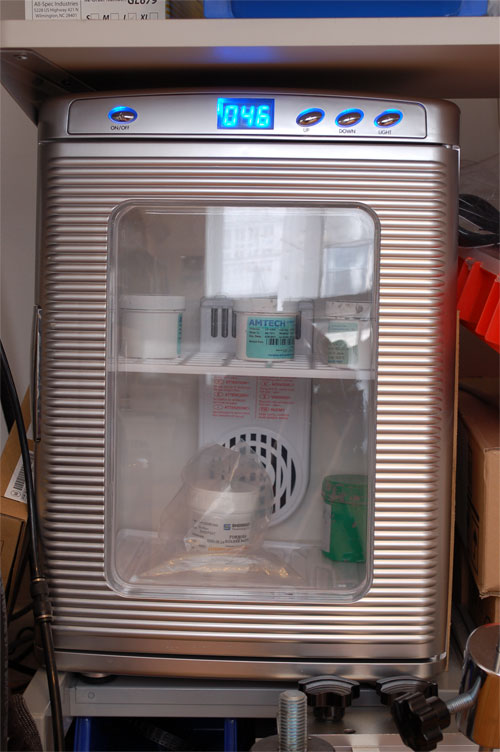Table of Contents
Introduction
If you want to do precise, fast, and fine pitch SMT assembly, you'll have to switch from 'wire' solder to 'paste' solder
Wire solder is what most people start with, it comes on a roll:
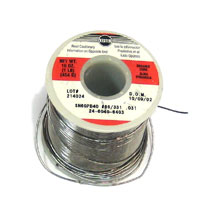
Inside the wire is a bit of flux (thats the smoke that comes off of the iron when soldering). The flux is often rosin type, no-wash type.
When doing SMT work, you can use thin wire but often times even that isn't good enough, you need to use paste! Paste comes in tubs of 1/2 - 1 lb or so. The paste has consistancy of smooth peanut butter and is made of ball of solder suspended in flux. As the paste is heated in an oven the solder melts and the flux burns away leaving a solid solder joint.
We may have a future tutorial with more details about choosing paste and solder but for now we will move on to what this tutorial is about which is how to store solder paste.
The problem with paste is that the flux can evaporate off, leaving the paste 'old' and 'dry'. It won't screenprint as well - you'll have difficulty with bridges and getting clean deposits. Paste should be kept cold, but not freezing. Kester suggests 0-10 degrees C (32-50 degrees F)
If you can get your hands on a cube fridge, we suggest using that - make sure that no food is stored in there as paste is toxic and it gets everywhere. If you don't have space for a cube fridge (like us) here are two solutions we found
Mini can fridge
If you have a single tub of paste, you can use $20 "desktop coke can" coolers. I picked up one from thinkgeek but you can find them at a few places.
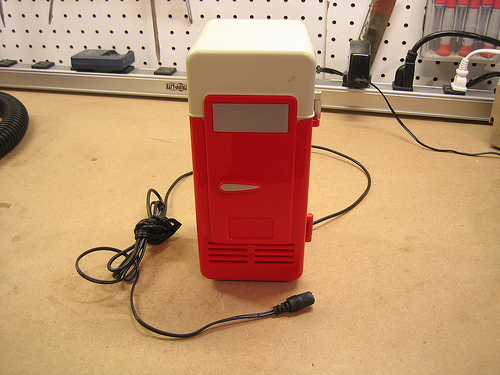
There is a peltier inside, which can cool down to about 40-50 degrees F. it works best with something that has full contact with the peltier, like a big tub of paste (not a syringe)
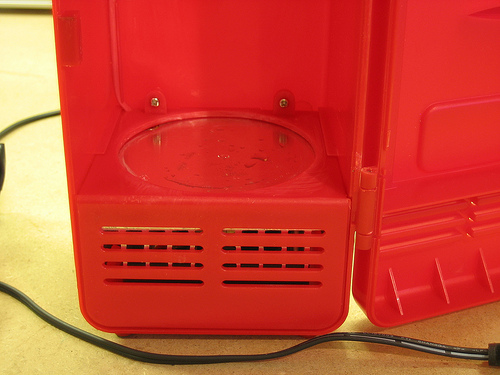
The only annoying thing is that they have a USB port and you may not have a computer to plug it into nearby. Also, although it is USB it draws much more than the 500mA max you're supposed to pull from a port. So we suggest using an external power supply. We had a 5V 1000mA power supply kicking around so we just cut the USB cable off and soldered a female 2.1mm jack on. You can also just use one of these 5V @2A supplies and splice it directly on

That's it! Pretty easy to use and kept our 1 lb tub cooler. We also wrapped the tub in a piece of foam to add more insulation.
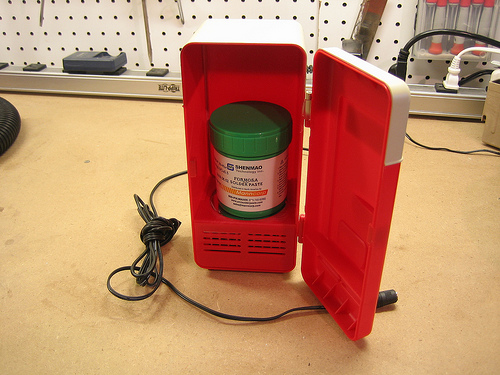
'Camping fridge'
Once we started having more than one tub, and also syringes for touch-up/dispensing we had to upgrade from the mini-can fridge. Usually people get a mini cube fridge but we don't have a lot of space, and also we determined that the power usage of a larger peltier-based fridge was less than the smallest cube fridge.
We picked up this fridge from thinkgeek, but you can find 12V camping fridges at most appliance stores. It draws about 60W and has a temp display on the front. It tends to keep stuff inside at 45 degrees F or so which is perfect for us.
One thing to watch for whith these is that they condense water during the summer months so you may want to keep a rag on the bottom to soak up water and wring it out once in a while.


